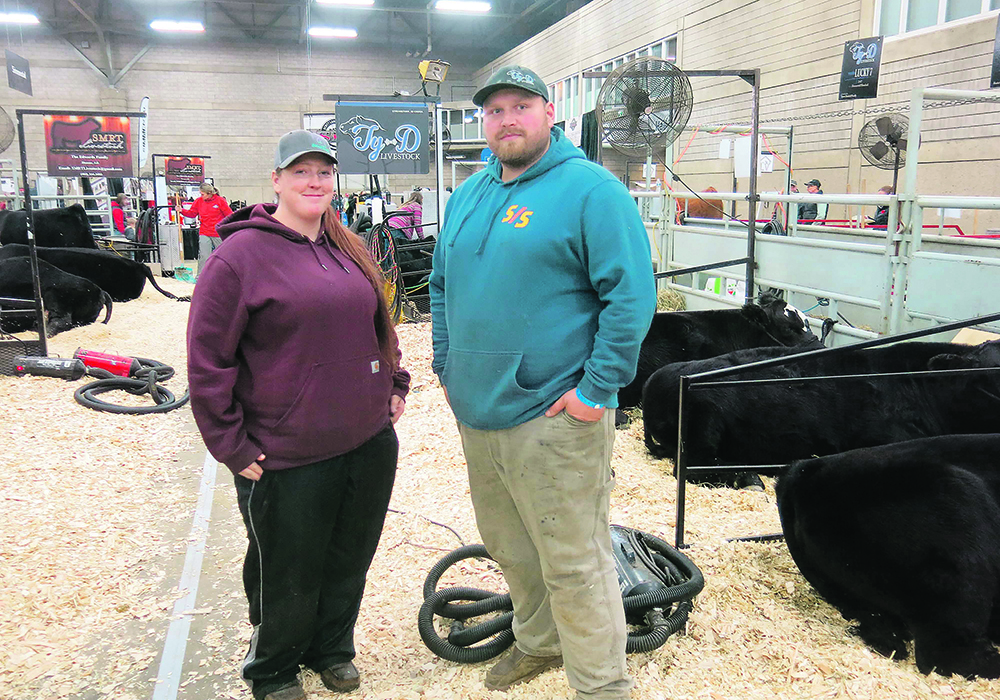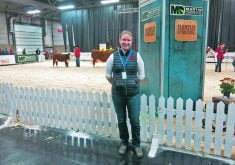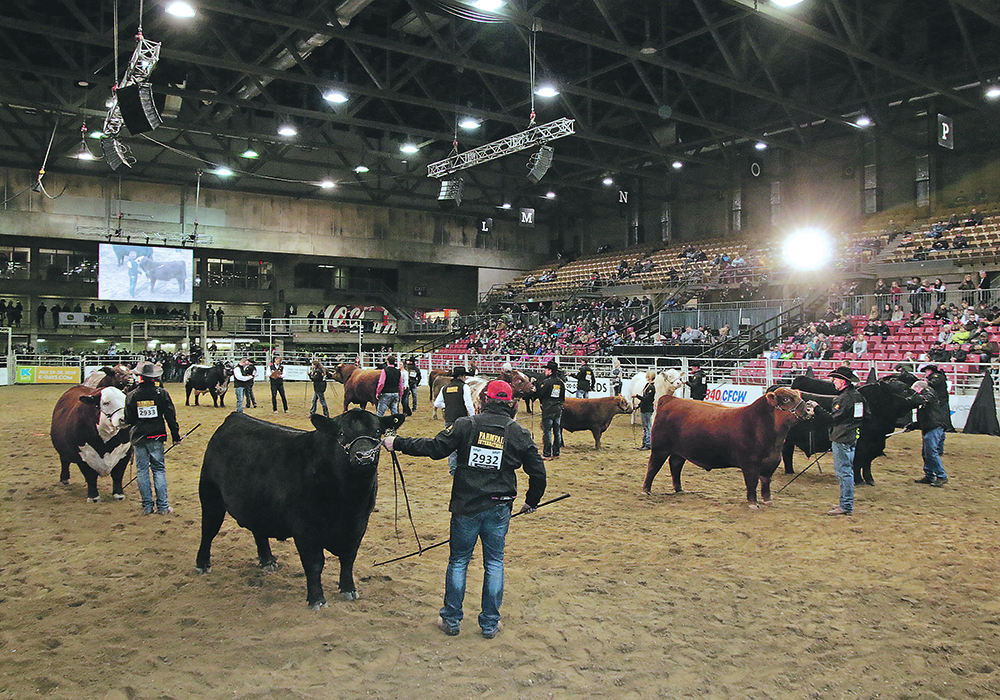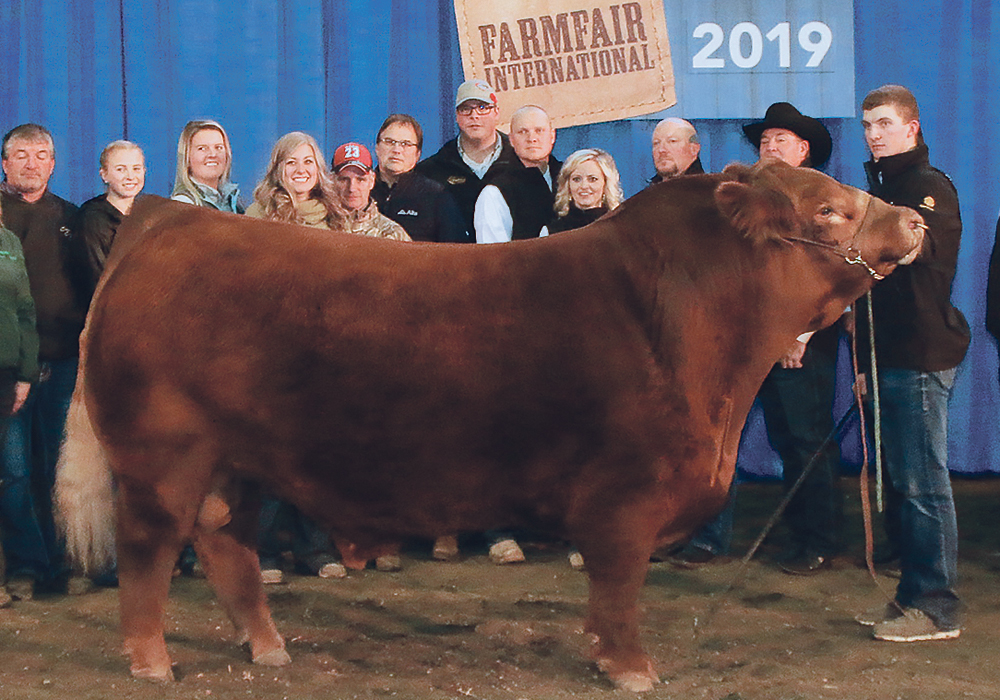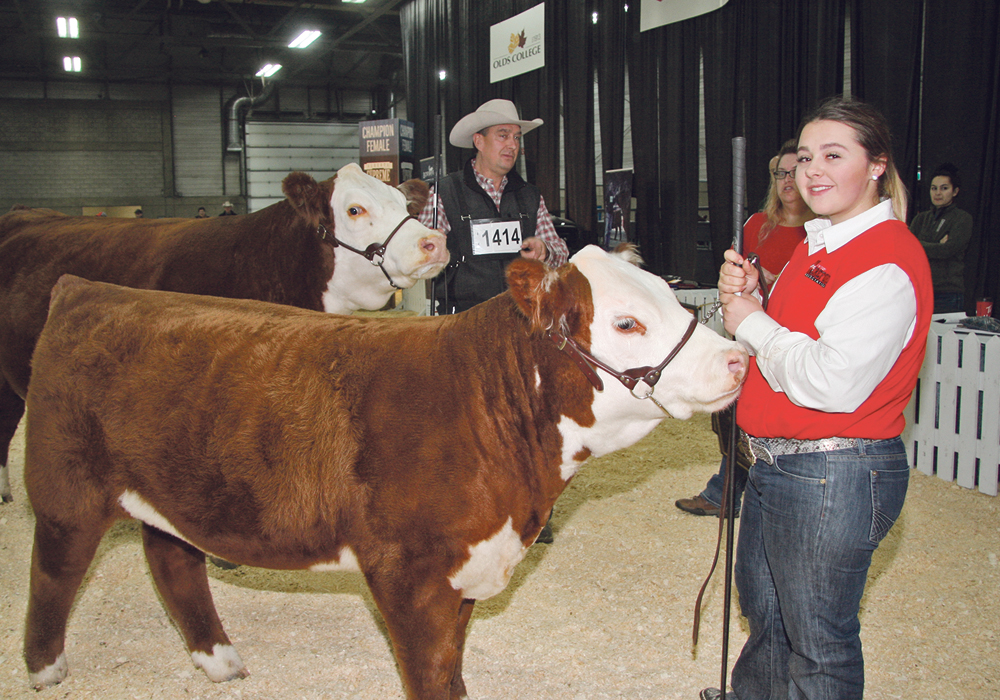Ty and Taylor Draves says they enjoy travelling to shows because it allows them to meet people and market their cattle
For cow-calf producers Ty and Taylor Draves, showing their cattle at events such as Farmfair International is as much a way of life as it is a means of making a living.
“Showing has always been a passion of ours,” said Ty, 28, as he talked over the noise of dozens of electric fans directing a steady flow of air onto cattle in holding pens at the Edmonton Expo Centre.
“I’ve done it my whole life, and when I met Taylor, we started doing it together, and we just love everything about it. We love the people, love marketing our cattle, and especially meeting new people.”
Read Also
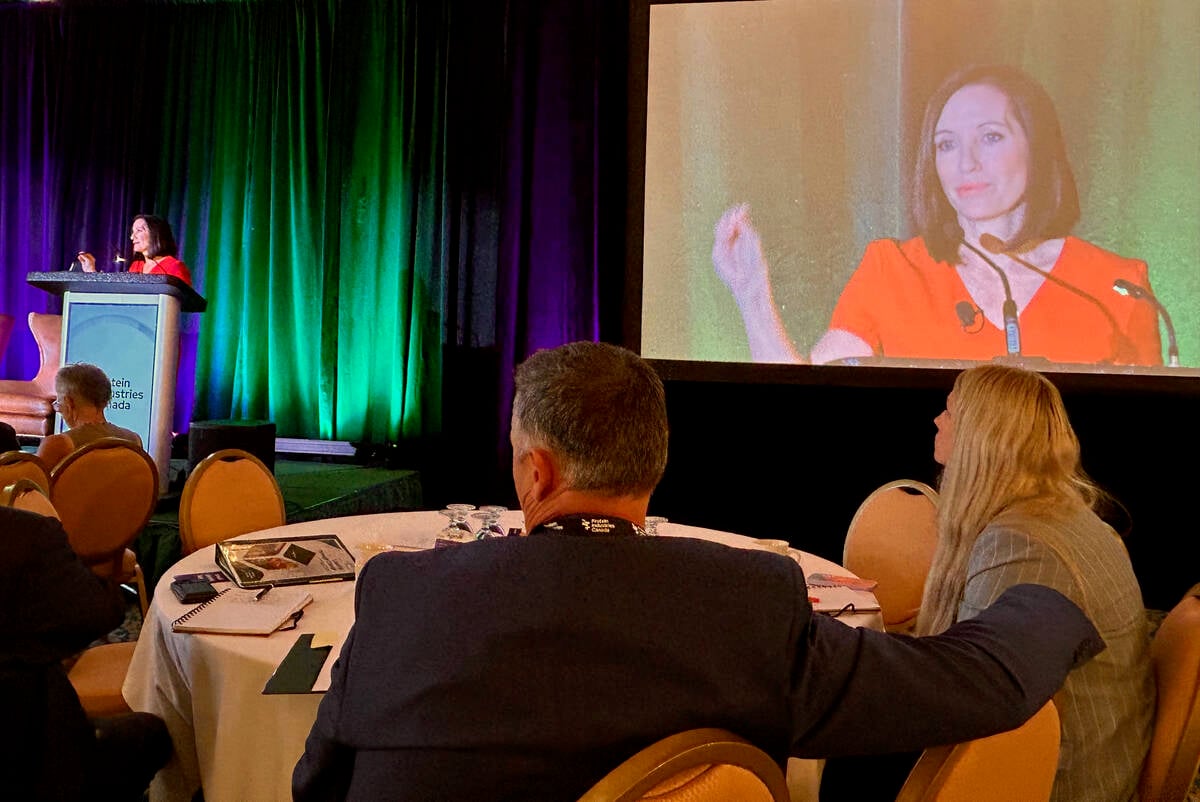
Canada told trade crisis solutions in its hands
Canadians and Canadian exporters need to accept that the old rules of trade are over, and open access to the U.S. market may also be over, says the chief financial correspondent for CTV News.
The couple, who have been married for about three years, operate Ty-D Livestock north of Lloydminster, Alta. The cow-calf operation has about 150 cattle that include a mix of about 100 purebred Simmental and purebred Angus as well as Simmental and Angus crossbred commercial cows.
“The whole industry is just so great to be around,” said Taylor, 29. “Everyone’s a big family. No matter whether you’ve known them for years and years, or you just met them, you have a common ground and you can get along with just about anybody.”
Ty and Taylor’s entries at Farmfair and a circuit of other shows represent the culmination of months of hard work.
“We started feeding the bred heifer and stuff July 1, so it all starts mid-summer or earlier and it ends in December, so yeah, it’s a long process to get them to come to show,” said Ty.
The couple usually start halter breaking potential show calves by the middle of August, he said. After the final selection takes place by September, “lots of times, once, twice, three times a week, they’ll be run through the barn, washed, blown, clipped, whatever, so it doesn’t happen overnight.”
However, every judge is different in terms of what they regard as flaws, said Ty. “Some are really critical on soundness. If something can’t walk, then it doesn’t matter how good they look.”
Other judges are willing to look past such problems if the calf looks the part, he said.
“They’ve got to have an adequate belly and just overall body shape — just overall mass and make sure they’re not overfed is a big one, too. A lot of judges look for freshly made cattle, so that means not a huge brisket on them, or sometimes they get fat lumps by their tail heads.”
The way that cattle are fed has changed in the last 20 years, said Ty.
“There’s all kinds of different supplements, and this supplement helps for taking away the fat pockets here, and oh, it’s crazy how much things have changed in that aspect,” he said.
“There are things that will make their bellies bigger and stuff like that. Twenty years ago, we just fed grain. Now we feed six or seven different things in a feed pan just for a certain animal.”
However, the financial payoff can be substantial. Apart from earning many thousands of dollars in prizes, winning cattle also command much higher prices among buyers, said Ty.
He pointed to a bred heifer last year that “earned a banner everywhere she went,” including at the Canadian Western Agribition in Regina. “And we ended up selling half of her in a sale in December and she brought in $54,000 for half, so yeah, that was definitely a highlight of our showing career so far.”
Further revenue is also generated through embryos produced by a heifer, with producers crossing fingers they’ll get another winning animal. By contrast, an average non-show cow earns about $3,000 to $10,000, said Ty.
There’s a lot of friendly rivalries between competing producers at events such as Farmfair, said Taylor.
“Everyone’s here to cheer each other on and everyone is happy for everyone else.”
Sometimes it gets a little heated, said Ty, laughing.
“Sometimes … but no, at the end of the day, we’re all a big family. We all look after one another.”
Ty and Taylor never have time to take a winter holiday, he said.
“So, this is kind of our holiday, as sad as that seems. But you know, we love every moment of it. It’s great.”
Being a cow-calf producer isn’t an easy life.
“It’s just one big circle. We just keep going around and around,” he said, pointing to the ups and downs faced by any farmer.
“I know it’s not for the weak person, that’s for sure. People that do it are definitely strong willed, and they say they wouldn’t rather do anything else, and I believe that to a tee. Some days, you’re wondering, but most of the days, there’s definitely benefits every day.”
Ty and Taylor’s infant son, Lawson, is starting to follow in his family’s footsteps.
“He loves the cattle already,” said Taylor. “He’ll be two in February, and his life is all about the tractors and cows and he gets up in the morning to come feed cows, and he loves every bit of it so far, so we’re really happy to raise him on the farm.”


